You may be one of those people who have the time very measured and adjusted by the needs. So on Ubuntu, it is possible to set Timers, Alarms, and Stop Watches. The procedure is simple, really.
Introduction
Many people use the pomodoro technique to improve their efficiency at work or at work. For this technique, it is important to keep time on activities. Therefore, knowing how to set alarms, timers, and stop watches is vital for this. So as not to always touch the phone, you can do it using the Ubuntu system.
In the specific case of Ubuntu, there are two basic ways to do it: through the graphical interface or from the terminal.
Although using the graphical interface may be the most ideal for novices, it is also true that the terminal has its charm and its good work. So today, I present you both methods.
Set Timers, Alarms, and Stop Watches on Ubuntu using Clocks
According to the GNOME Clocks project:
A simple and elegant clock application. It includes world clocks, alarms, a stopwatch and a timer.
That is to say, it is a fairly simple to use application that provides you with a world clock but also includes Alarm, timer, and stop watch. Personally, it reminds me a lot of the Clock app on Android.
So, GNOME Clocks has to be the first choice.
If you don’t have it on your system, just open a terminal and run
sudo apt update
sudo apt install gnome-clocksThis will install the application on the system. As it is quite light, it should not take long.
Once it is installed, you can run it from the main menu, and you will see something like this:
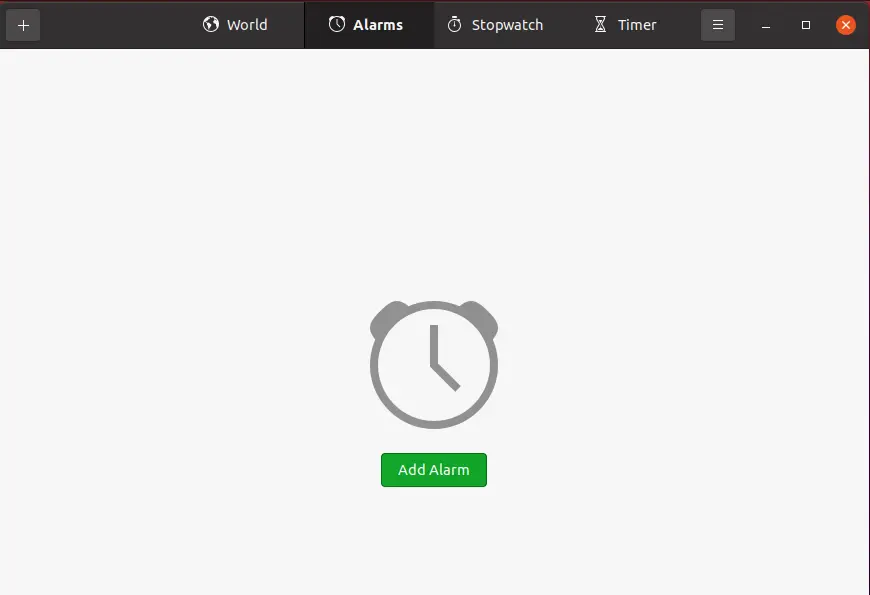
Setting an alarm on Ubuntu
The first step is to set an alarm. To achieve this, switch to the Alarm tab and press the Add Alarm button.

As soon as you do this, you will see this screen
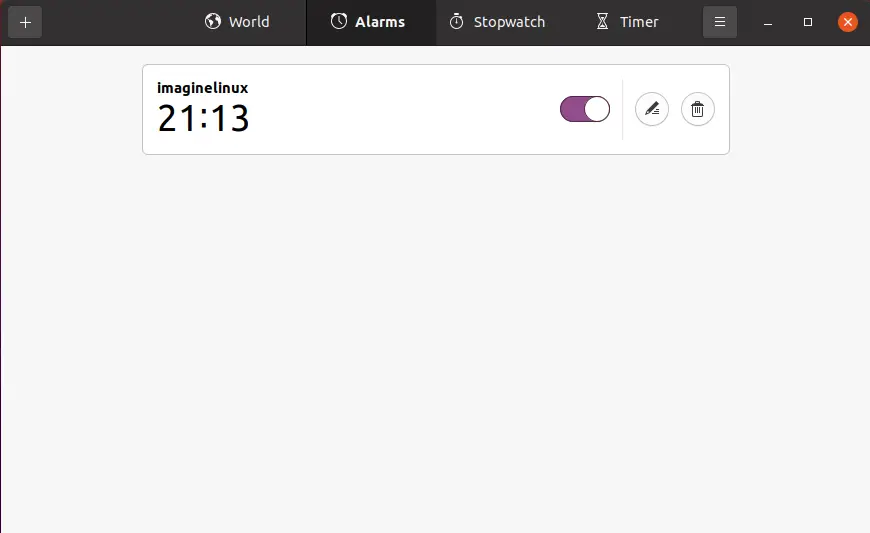
Now define the exact time you want the alarm to go off. You can also set the frequency and the name of the alarm. Great if you spend a lot of time on the system, and a reminder doesn’t hurt.
Define a Stop Watch on Ubuntu
Now if you want a Stop watch, you need to go to the Stop Watch tab
tab and you will see the following

There you will have to click on Start, so you can either stop it or use lap.
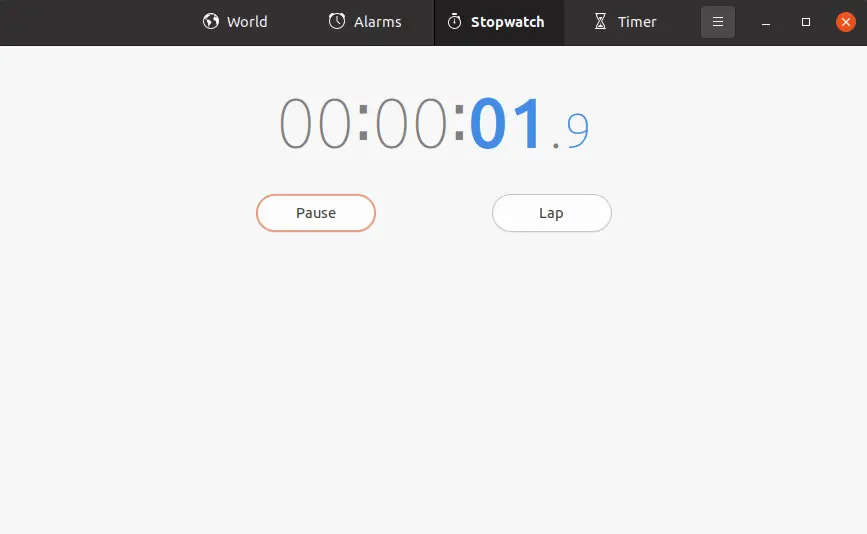
You will also see how the laps are saved, and can play with them.
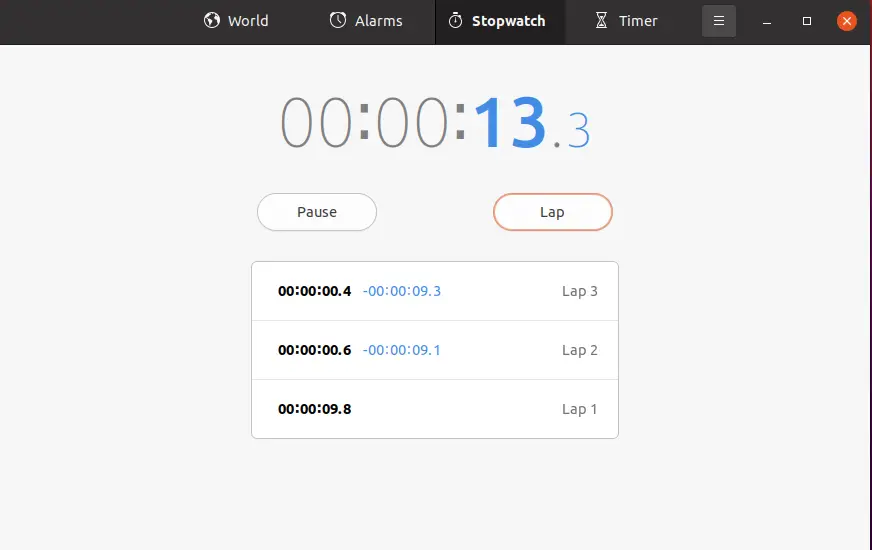
Define Timer on Ubuntu
Finally, there are the Timers. This option is in the last tab called Timer, When you click on it, you will see this screen.

The main thing is to choose the duration. It can be manual or one of the predefined options.
Then, click on the Play button to start the process.
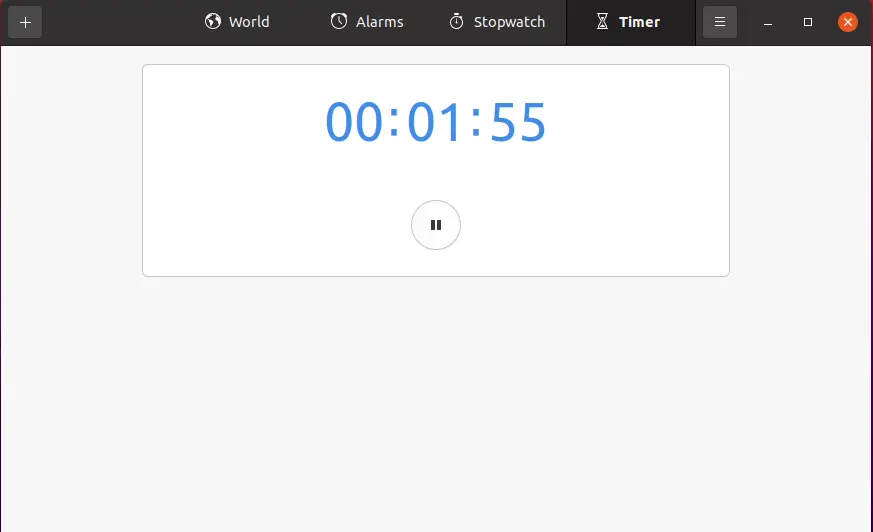
When you start it, you can pause it, resume it or simply delete it with each of the buttons shown.
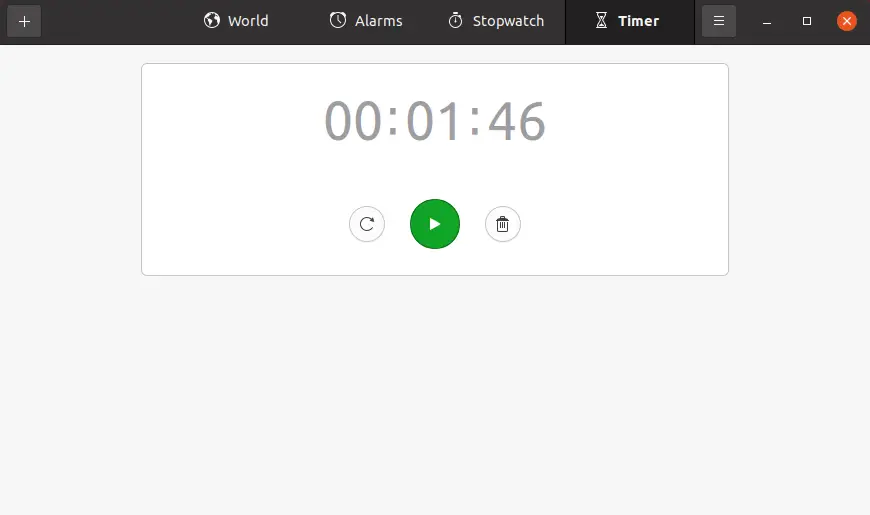
Set Timers, Alarms, and Stop Watches on Ubuntu using the terminal
In the case of the terminal, there are some tricks or alternatives to perform some of these tasks.
Set timer using the terminal
In the specific case of Time, you can download a simple script to perform the process.
First, install the curl command.
sudo apt update
sudo apt install curlThen download the script
curl -o ~/timer https://raw.githubusercontent.com/rlue/timer/master/bin/timerThen give it permissions to run
sudo chmod +x ~/timerThen, you can show the help
./timer -hAnd as you can see, the usage is simple. If you like, you can use -d to make the time be in seconds.
./timer -d 20Or without the option for the value to be expressed in minutes
./timer 2Countdown on Ubuntu
To make a countdown in the terminal, you can then resort to a simple application called countdown.
To download it, you have to visit its GitHub profile and locate the Linux binary for your processor.
Something faster would be to use the terminal. To achieve this, download the application.
wget https://github.com/antonmedv/countdown/releases/download/v1.0.0/countdown_linux_amd64
mv countdown_linux_amd64 countdownThen, assign permissions on it
chmod +x countdownAnd finally run it to get some help
./countdownYou will see something like this
usage:
countdown 25s
countdown 1m50s
countdown 2h45m50sRight there you will see how to use it and it is effortless. Now try it.
countdown 7sYou will see something like this
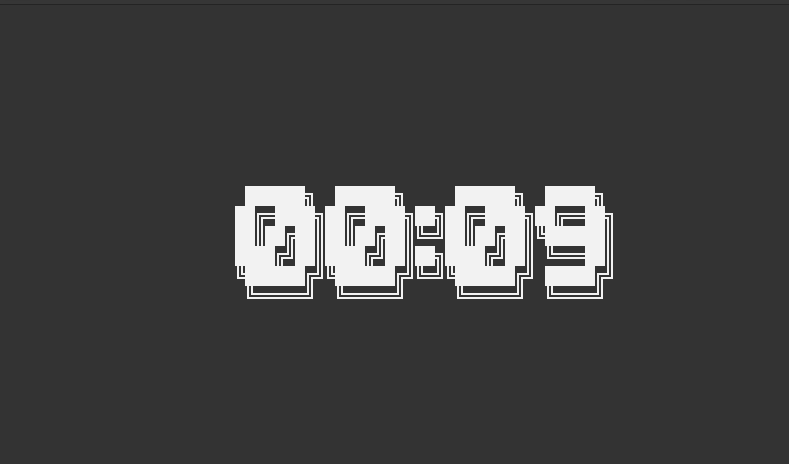
That’s how easy it is to use.
Alarms on Ubuntu from the terminal
Although not exactly a tool, it is possible to use the sleep command together with an audio player to set an alarm.
What does sleep do? Well, it suspends the execution of a program or the terminal for a specified time. Then you can use it to pause the terminal and, at the end of the time, run an alert.
For example,
sleep 4h && mplayer /path/to/file.mp3Then the terminal will sleep for 4 hours and then play an audio using mplayer.
If you want to be more specific, you can include the minutes
sleep 1h 14m && mplayer /path/to/file.mp3Although this is not a definitive solution, it is true that this works in most cases.
Timers Alarms Stop Watches on Ubuntu – Conclusion
The Ubuntu software catalog is enriched with many programs that make it more and more productive. For example, making alarms, timers, and stop watch is a simple process using the Clocks GUI, but in the terminal there are options as well.
I hope you liked this post, and you can share it with all your friends using social networks.